The HTC One M9 Review: Part 1
by Joshua Ho on March 22, 2015 7:00 PM EST- Posted in
- Smartphones
- HTC
- Qualcomm
- Mobile
- Snapdragon 810
- One M9
System Performance: Snapdragon 810
We've been able to test Snapdragon 810 before, but it was only in the context of Qualcomm’s developer platform tablets and phablets, which have a higher possible TDP than shipping devices, and generally doesn’t have any need for battery life as these devices usually spend all of their time plugged into a charger. Thus, the One M9 represents our first experience with a Snapdragon 810 device with shipping software and hardware. HTC noted during the review process that our devices were running non-final software, and we received an OTA update that significantly changed the thermal throttling characteristics of the device, but this seems to have only affected performance in situations where the SoC was nearing maximum acceptable skin temperatures as performance in these benchmarks were relatively unchanged.
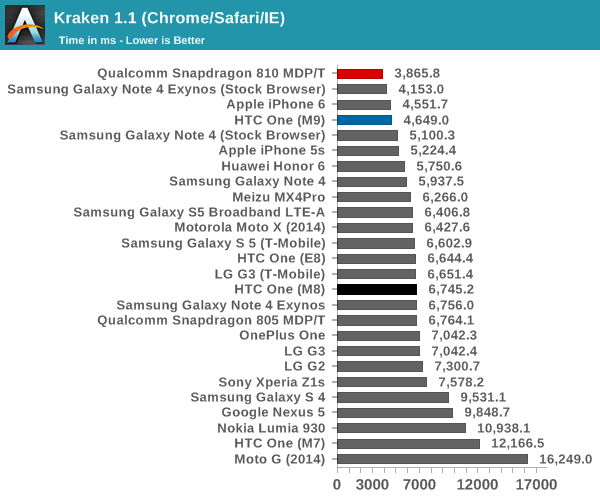
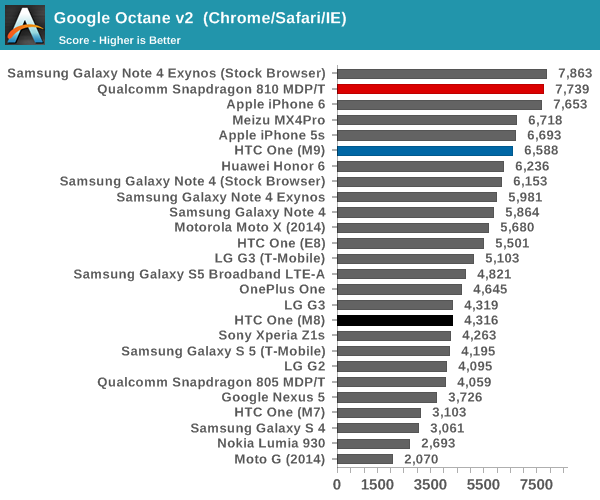

In our first few browser tests, we can see that the One M9 posts dramatically lower performance than the Snapdragon 810 MDP/T, which seems rather strange. However, using CPUBurn to try and load just a single thread reveals that without HTC’s CPU cheats, it’s basically impossible to get the A57 cluster beyond 1.5 to 1.6 GHz. It's important to emphasize that this isn't new behavior, as this was present on pre-release software as well, which means that HTC didn't do this at the last minute.
For those that are unfamiliar with how HTC's CPU cheats work, HTC continues to rely on some level of benchmark detection, and it seems that when a benchmark is detected it enables a "High Performance" mode in the developer settings with no option to disable this mode. It's possible to work around this mode by using benchmarks that evade such detection mechanisms (and we do), but it's also possible manually toggle this mode on and off if a benchmark isn't detected. This benchmark mode appears to relax throttling constraints, but more obviously it enables one to go from a maximum of 1.6 GHz to the rated 2.0 GHz of the Snapdragon 810 for extended periods of time. However, even in this mode we can see that a sustained load of a single thread on the A57 cluster will cause the cluster to throttle to 1.7 GHz in this mode, while without this mode enabled we see that a single thread will eventually cause the A57 cluster to clock around 1 to 1.2 GHz. If the normal governor does allow the SoC to reach 1.9 GHz, I can't really perceive the amount of time that it does reach such a speed.
The most concerning result is WebXPRT, which is a bursty workload that runs over a few minutes, which suggests that we’re already seeing thermal throttling in the M9.

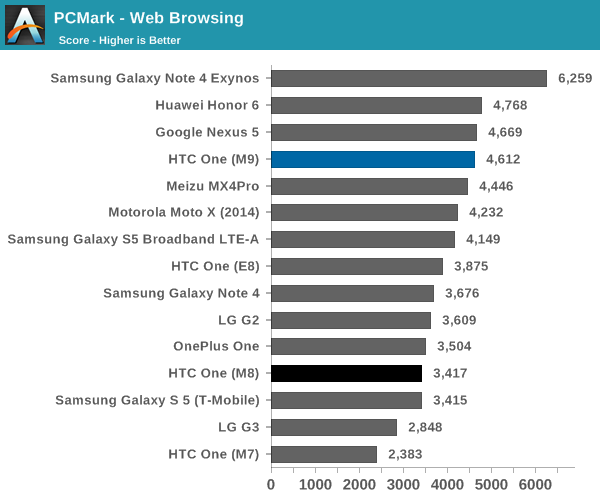
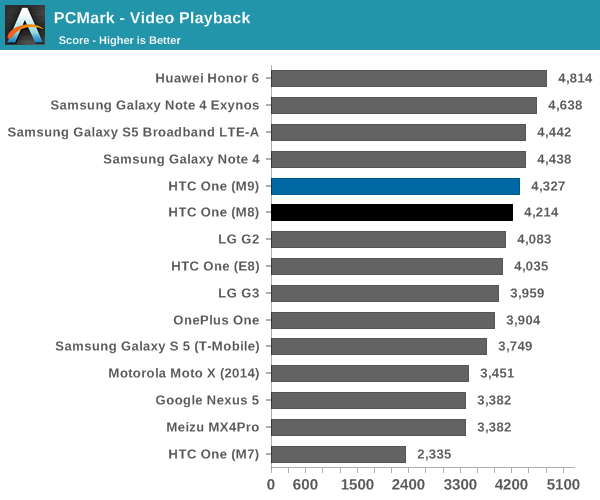
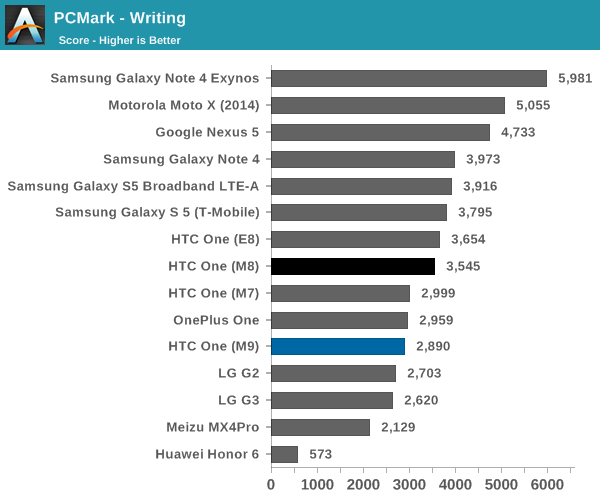
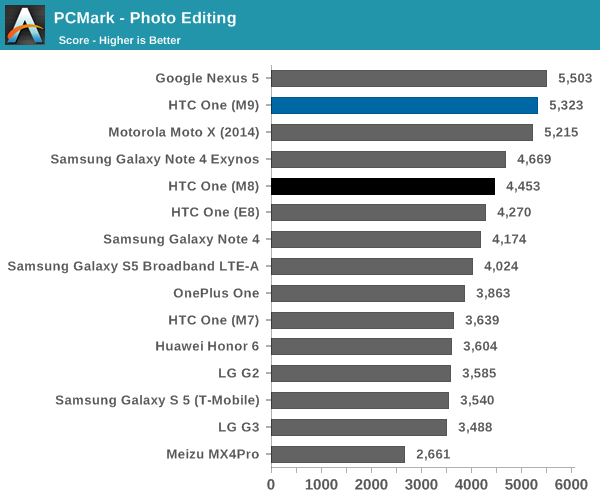
In PCMark, which is a benchmark that tends to focus strongly on race to sleep scenarios, we can see that the Snapdragon 810 appears to significantly trail behind the Exynos 5433, which is on a similar process node. It's hard to say whether this is due to the scheduler configuration or differences in the physical design of the SoC, but at any rate this is another concerning performance from the SoC of the One M9.
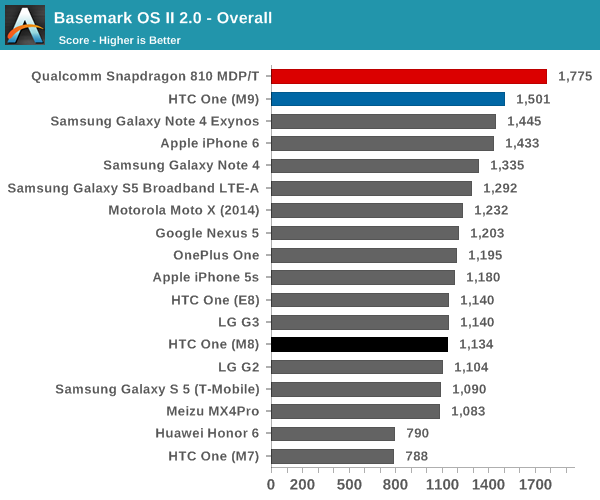

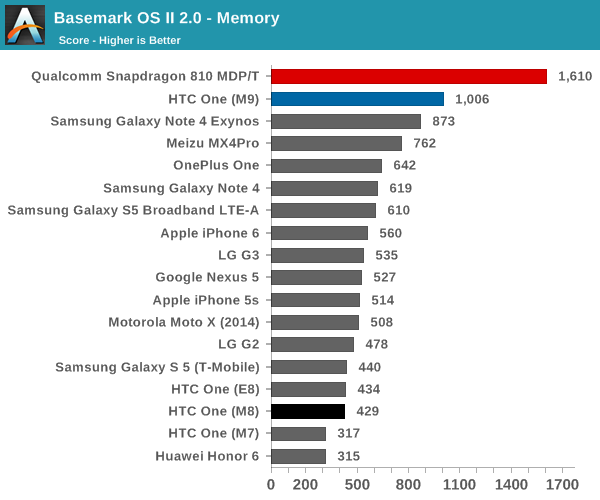
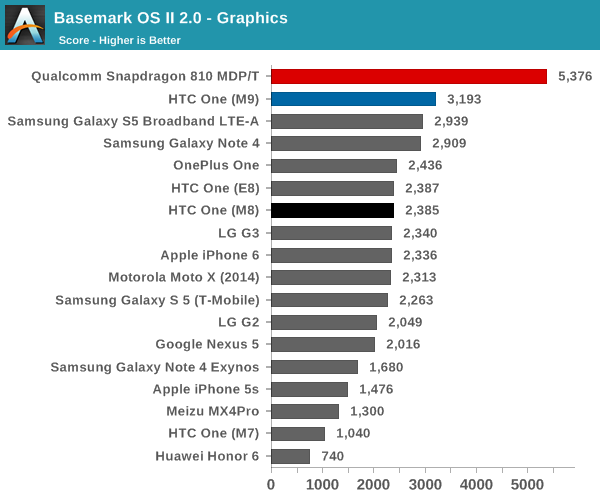
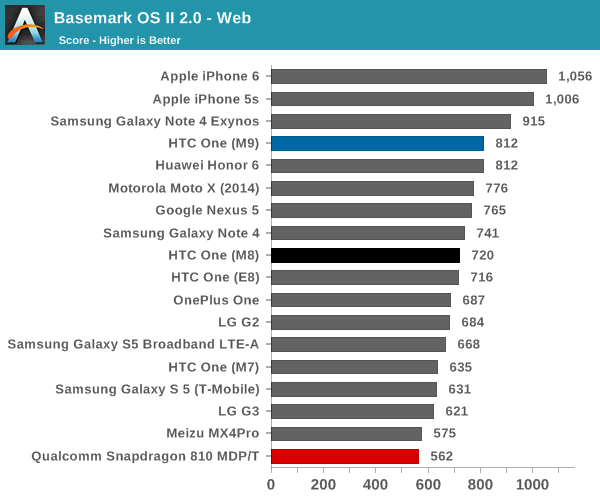
Moving on to the general system performance tests, we see that the M9 delivers a reasonable improvement in performance over the M8, but most of the difference seems to come from the GPU and storage performance rather than anything else that was tested. Overall, the Snapdragon 810 really isn’t off to the best start in any test we’ve thrown at it so far. To see if Snapdragon 810 has any redeeming features we’ll look at GPU performance next.


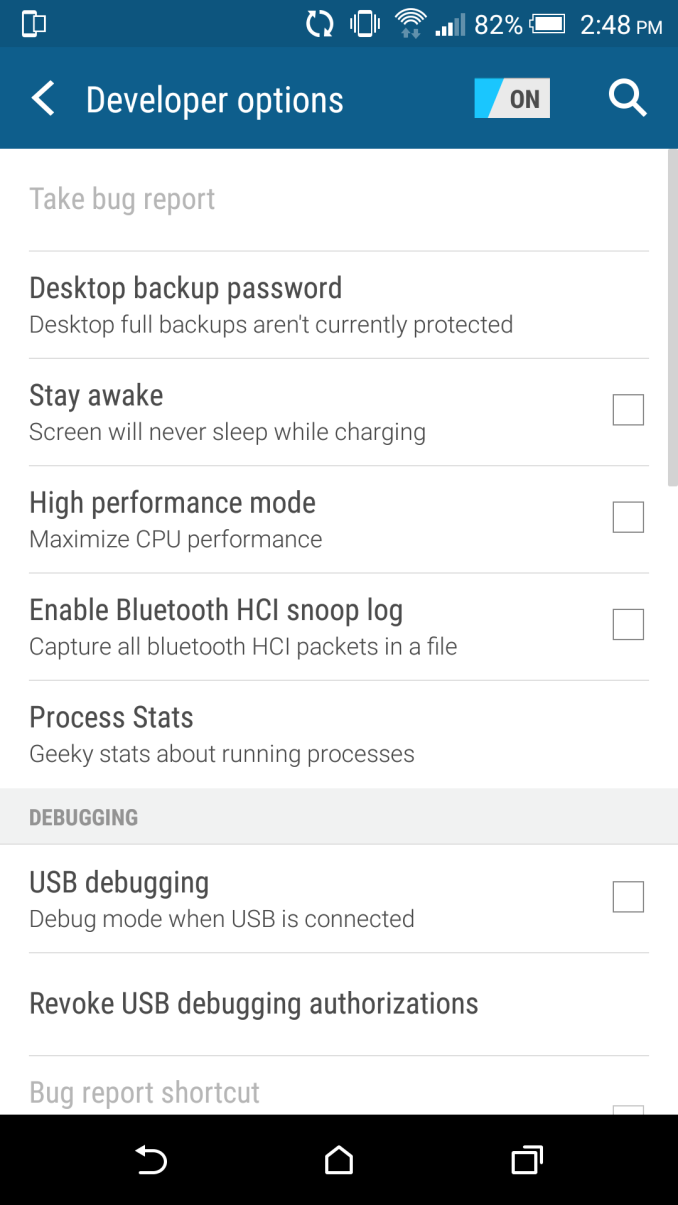








132 Comments
View All Comments
dandroid45 - Tuesday, March 24, 2015 - link
Man, I feel the same way, black, blue, silver, and white and maybe red, call it a day after thatflyingpants1 - Monday, March 23, 2015 - link
I'd give it all up for the front speakers and mSD. The metal is pointless since it's going in a case on day 1.Jumangi - Tuesday, March 24, 2015 - link
Yea your better off getting a cheaper used M8 off of Ebay than one of these. HTC is in for another long year of losses.ol1bit - Sunday, March 22, 2015 - link
I Still have an M7, and it shocks me to see HTC keeps getting worse with each generation. Sure it's faster at gaming and such forth, but speed isn't everything. My phone is plenty fast for everyday items, and even some lite gaming, but for most gaming I use My Shield Portable. Sad really.VoraciousGorak - Sunday, March 22, 2015 - link
Also a (very happy) M7 owner here, looks like I'll be keeping my phone for at least another generation. Loving the screen, other metrics still competitive, newer smartphones not really enticing me even with how relatively old the M7 is. Shame I have one of the ones with a crappy low-light sensor (purple all the things!)RYF - Monday, March 23, 2015 - link
There are some batch of M7 with defective camera module. You can get it changed. I have several friends who get it swapped and it is all well till now.Refuge - Monday, March 23, 2015 - link
I also own and still love my HTC One M7. Great phone, and nothing has driven me to upgrade yet. I've never had a smart phone as long as this one.superflex - Monday, March 23, 2015 - link
Mine is almost 2 years old and other than a screen crack in one corner and dust under the front camera (which I never use), I love the phone.Battery life is still good for a 2 year old phone and the boom sound cant be beat.
This review doesn't bode well for HTC. Throttling, heat, poor display and mediocre CPU gains don't compel me to upgrade.
Notmyusualid - Sunday, March 22, 2015 - link
I feel some pain when I think of my past M7 too, the size was perfect, the build was lovely, display is one of the very best I've seen, but the charge time did it for me.My GS5 charges quick (under 2hrs), and when I can get a charge, I get more quicker too, thus making me more mobile. But the GS5 screen (in MY opinion) is horrible.
Now I've nowhere to look; M9 no front buttons, GS6, no front speakers. Event the amazing Note Edge I tried at the weekend - no front spearkes.
But its my money, and I can wait. Someone will come along with the right product eventually.
Spoelie - Monday, March 23, 2015 - link
The Moto X 2014 comes close to a spiritual successor of the One M7. I've passed it tho for 3 reasons:* One front firing speaker instead of two, subjective tests all give the nod to boomsound.
* Amoled - great for movies, not so great for Android white-infused-Lollipop. Several counts of far reduced battery life.
* No IR blaster
But ergonomically, bezel size, etc. it is much better than the HTC M8+. It also has the quick charge spec.
Fix these for the Moto X 2015 - update the SOC, keep the physical size/1080p, maybe improve camera performance a bit, and I'm dropping my HTC...